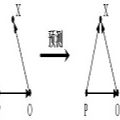Graph neural networks (GNNs) have been widely used in many graph-based tasks such as node classification, link prediction, and node clustering. However, GNNs gain their performance benefits mainly from performing the feature propagation and smoothing across the edges of the graph, thus requiring sufficient connectivity and label information for effective propagation. Unfortunately, many real-world networks are sparse in terms of both edges and labels, leading to sub-optimal performance of GNNs. Recent interest in this sparse problem has focused on the self-training approach, which expands supervised signals with pseudo labels. Nevertheless, the self-training approach inherently cannot realize the full potential of refining the learning performance on sparse graphs due to the unsatisfactory quality and quantity of pseudo labels. In this paper, we propose ROD, a novel reception-aware online knowledge distillation approach for sparse graph learning. We design three supervision signals for ROD: multi-scale reception-aware graph knowledge, task-based supervision, and rich distilled knowledge, allowing online knowledge transfer in a peer-teaching manner. To extract knowledge concealed in the multi-scale reception fields, ROD explicitly requires individual student models to preserve different levels of locality information. For a given task, each student would predict based on its reception-scale knowledge, while simultaneously a strong teacher is established on-the-fly by combining multi-scale knowledge. Our approach has been extensively evaluated on 9 datasets and a variety of graph-based tasks, including node classification, link prediction, and node clustering. The result demonstrates that ROD achieves state-of-art performance and is more robust for the graph sparsity.
翻译:在许多基于图表的任务中,例如节点分类、链接预测和节点群集等,广泛使用地心神经网络(GNNS),但是,GNNS主要通过在图形边缘进行特征传播和平滑而获得业绩效益,从而需要足够的连通和标签信息来进行有效传播。不幸的是,许多真实世界网络在边缘和标签两方面都很少见,导致GNNS的次最佳性能。最近对这一稀疏问题的兴趣集中在自我培训方法上,这扩大了以假标签作为监督的信号。然而,由于假标签质量和数量不令人满意,因此自培训方法本身无法充分发挥在稀薄图表上改进学习业绩的潜力。在本文件中,我们提议采用一种新颖的有觉悟的在线知识蒸馏方法,用于稀薄的图形学习,导致GNNNNNPS。我们为RED设计了三种监督信号:多尺度的接收-认知图表知识、基于任务的监督以及丰富的精练知识,从而能够以同行教学的方式进行在线知识转换。为了在多层次的接收领域提取知识,在多层次的图像领域隐藏知识中,每个学生的预言的预言中,需要一种对不同程度的预言的预言的预言,每个水平进行一个学生的预言的预言的预言的预言,每个水平的预言的预言的预言的预言中,每个水平的预言的预言的预言的预言中,而需要的预言中,对于我们的预言的师的预言中,要通过一个不同的预言的数学的预言的数学的数学的每个路路路路路路路路路路路路路路路路路路路路路路路路路路路。



